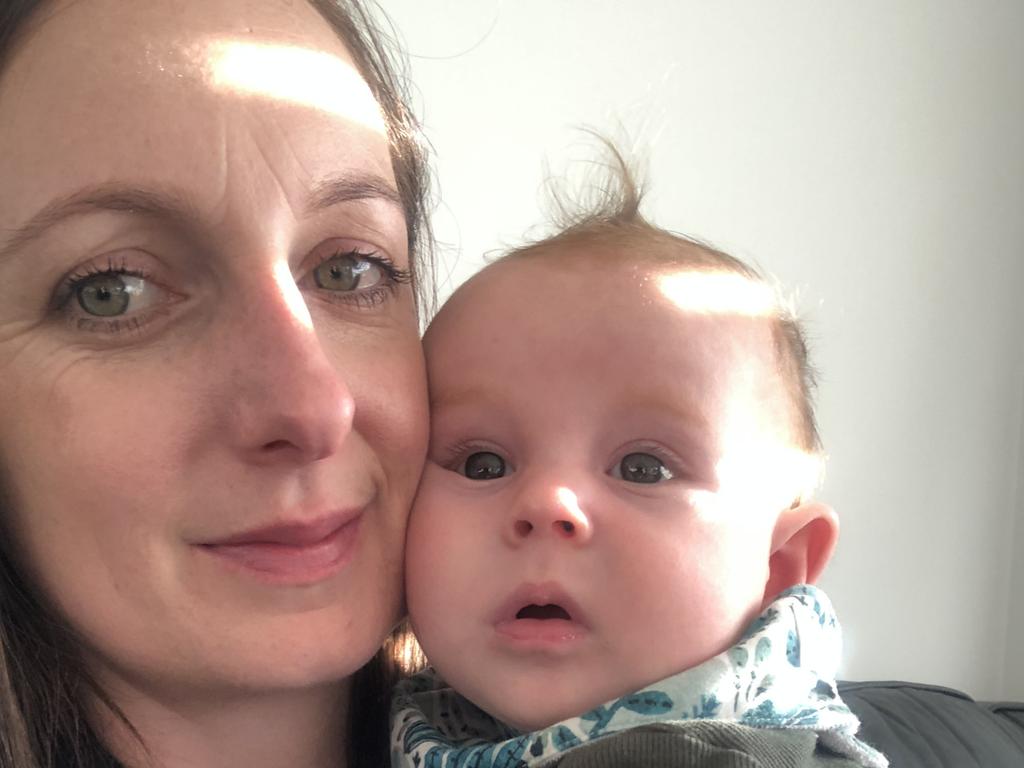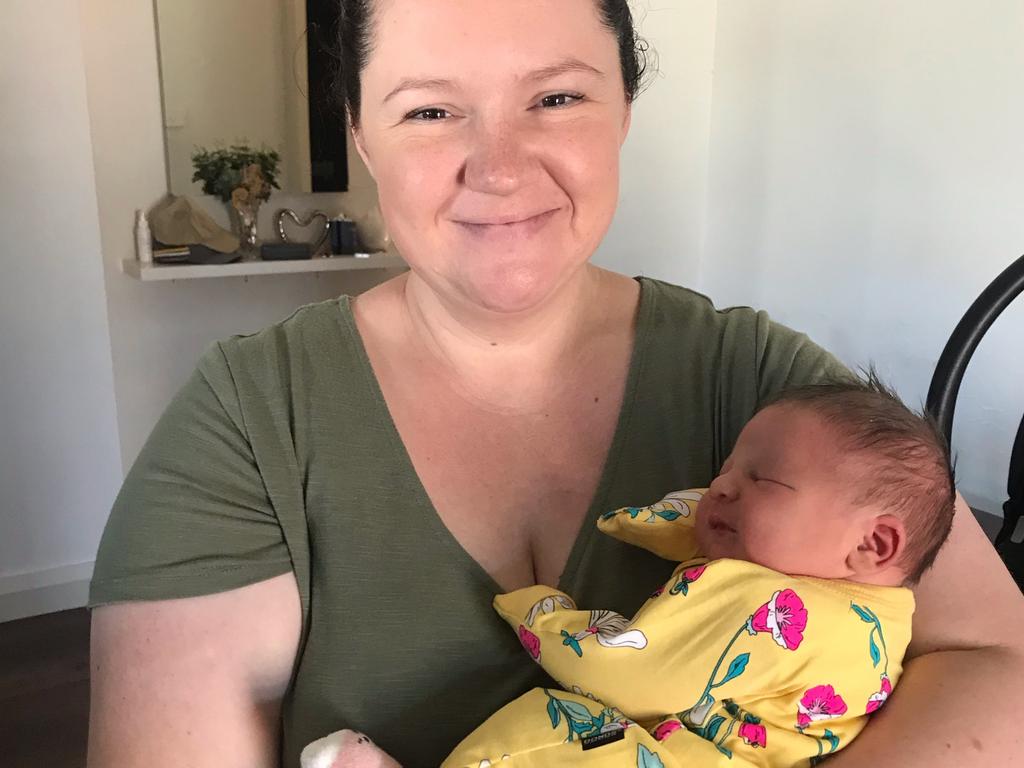$53m dollar upgrade for Gunnedah Hospital but it has no doctors
Pregnant women in the town of Gunnedah are encouraged to give birth midweek due to no weekend doctors at a hospital which is about to undergo a $53 million upgrade.
NSW
Don't miss out on the headlines from NSW. Followed categories will be added to My News.
The farcical state of the NSW rural health system has been exposed by a bush town where women are told to schedule a midweek caesarean birth because of the risk there will be no doctors at its public hospital on weekends.
Gunnedah Hospital is slated for a $53 million upgrade but has no permanent doctors. There is also a shortage of fly-in locums which often leaves the hospital doctor-less.
“We’ve had no doctor on several occasions,” Gunnedah Community Roundtable representative Kate McGrath said.
“Essentially we are dependent on locums in the emergency department and VMOs (visiting medical officers) for the wards, and locums are in high demand so there have been several occasions where we have not had any doctors at all.”
Ms McGrath said pregnant women were being scheduled for Caesareans during the week by the town’s few general practitioners to avoid the risk of labour or complications on weekends where there may not be a doctor at the hospital.

“If they have any kind of risk, even if you are a little bit overweight, women are being scheduled for caesarean sections during the week because the town’s GPs are not willing to take the chance of them going into labour over the weekend and something going wrong, if there is any risk they are mitigating that with caesarean sections,” Ms McGrath said
“If you are going to have a baby, you need to do it Monday to Friday which is horrifying.”
Ms McGrath said the $53 million upgrade to Gunnedah Hospital would be useless without fixing the doctor shortage.
“It’s absolute nonsense, it’s almost laughable. We’ve put it to Kevin Anderson (member for Tamworth) how do you plan to staff the hospital and he has said if you build it they will come,” she said.
“There are places like Parkes where they have upgraded facilities and have these beautiful, shining surgical theatres and maternity wards they haven’t used because they can’t staff them. There doesn’t seem to be any plan, just wishful thinking.”
Ashlee Sheedy, a mother of two from Gunnedah, was induced midweek to have her son last year to avoid labour over the weekend.

“I was told I had to be induced if I wanted to give birth in Gunnedah because there were no doctors after 5pm and no doctors on the weekend. It was awful, the anxiety, so I was induced on a Wednesday. There is a lot of induction and Caesareans here,” she said.
The town’s GPs, which are on call, have had trouble attracting more doctors to their surgery due to the burden created by no doctor at the hospital.
It is the latest in the crisis that has seen the state lose 600 rural and remote GPs in the past decade.
The multimillion-dollar Gunnedah upgrade is a repeat of the $72 million upgrade of the Parkes Maternity unit that was suspended in 2019 because the unit could not be staffed.
Parkes Mayor Ken Keith said his own granddaughter Libby was almost born on the side of a road as her mum Libby had been forced to travel to Forbes then Orange hospitals.
Dr Aniello Iannuzzi from nearby Coonabarabran said the situation was repeated throughout the state.
“Gilgandra is typical of what is happening everywhere, an ageing workforce, the hospitals are mismanaged, it is a total shemozzle and we’ve been saying it for years and no-one has been listening. We have to double, tripled the Medicare rebate in rural areas as an incentive.”

The recent NSW parliamentary inquiry into health outcomes and access to health and hospital services in rural, regional and remote New South Wales found “rural, regional and remote patients have significantly poorer health outcomes, greater incidents of chronic disease and greater premature deaths when compared to their counterparts in metropolitan areas” and that they have “inferior access to health and hospital services”.
Millions spent but still not enough doctors in bush
Millions of dollars have been channelled into addressing the doctor shortage in rural NSW for more than three decades, but the problem is only getting worse.
Now rural doctors are calling for an expansion of the two-year registrar training to be expanded with a compulsory year spent in rural practice for new doctors. Rural doctors alerted NSW Health 35 years ago that a crisis was looming as rural generalists, those doctors who can do anaesthetics and obstetrics as well as general practice, faced retirement.
But dozens of rural hospitals remain unstaffed by a single doctor. According to one assessment, the state had lost 600 rural and remote GPs in the past decade alone. The tax payer funded Bonded Medical Places Scheme ran between 2004 and 2019.
It was a scholarship to train doctors who would then work in rural communities as part of their return of service obligation. Rural generalists Dr Aniello Iannuzzi from Coonabarabran said the scheme had not worked.
“Too easy to rort, too easy to walk away, and what happened to all these millions spent on all these clever people making policies and setting up agencies?” Dr Iannuzzi said.
Dr Charles Evill, president of the Rural Doctors Association of NSW agrees.
“The retention rate was crap, less than 10 per cent of people who had done a rural bonded scholarship ended up full-time in rural areas,” he said.
The Bonded Medical Program is the new version and bonded doctors must work in an “area of need” but it is not limited to working in rural areas.
Fly in fly out is also counted, meaning doctors can still live in metro areas and work sporadically as locums which pays up to $2000 a day.
Dr Paul Mara, a rural GP from Gundagai who set up the NSW Rural Doctors Association, said billions of dollars had been poured into the problem but it had continued to “go backwards”.
He said doctor training should be expanded beyond the two-year registrar training in hospitals to three years, with one year required to be spent in a rural practice.
“That would put about 1800 doctors into rural towns,” Dr Mara said.
More Coverage
Originally published as $53m dollar upgrade for Gunnedah Hospital but it has no doctors








